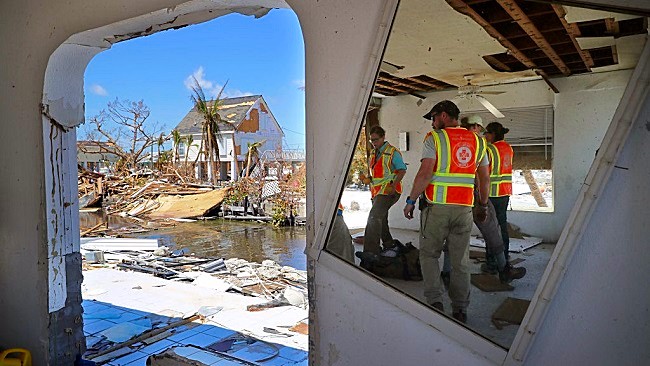
As Hurricane Jose prepares to follow a projected path along the east coast toward New York, the National Hurricane Center is tracking two more storms in its wake. The first is Tropical Storm Lee, whose formation off the West African coast (and westward trajectory) may limit its activity to the ocean. The second, however, poses a greater risk to the Caribbean and Florida, both of which are still recovering from the devastation caused by Hurricane Irma. And if experts’ fears come true, Hurricane Maria will plow right into the Caribbean later this week.
Tropical Depression 15 expected to become a hurricane by the end of next week. pic.twitter.com/mhVPl5dJRY
— NWS Columbia (@NWSColumbia) September 16, 2017
USA Today reports the NHC “upgraded the one-time disturbance to a tropical depression” at around 2pm ET on Saturday, noting its “sustained winds of 35 mph” and charting its westward movement at “20 miles per hour.” Compared to Irma and Hurricane Harvey, the numbered-only storm doesn’t appear to be that strong or threatening in its current state. Even so, experts have “forecast [it will] become a tropical storm within hours” and may attain hurricane-like strength when it reaches the Leeward Islands late Monday or early Tuesday. Watches are in effect for St. Lucia, Martinique, Guadeloupe, Dominica and Barbados.
NHC to begin advisories on Potential Tropical Cyclone 15 shortly – the super-active 2017 Atlantic hurricane season continues. pic.twitter.com/NysUnSXwjH
— Philip Klotzbach (@philklotzbach) September 16, 2017
To make matters worse, AccuWeather suggests conditions in the Atlantic and Caribbean are “conducive” enough for Tropical Depression 15 to achieve Category 2 status as Hurricane Maria on Tuesday. Considering Irma’s recent and Jose’s projected paths, this would make the new storm the third tropical system strike the area in two weeks. Maria likely won’t be as strong as Irma, but come Thursday morning, the NHC’s current outlook will see it passing over Puerto Rico as a sizable storm.
(Via USA Today, AccuWeather and National Hurricane Center)
